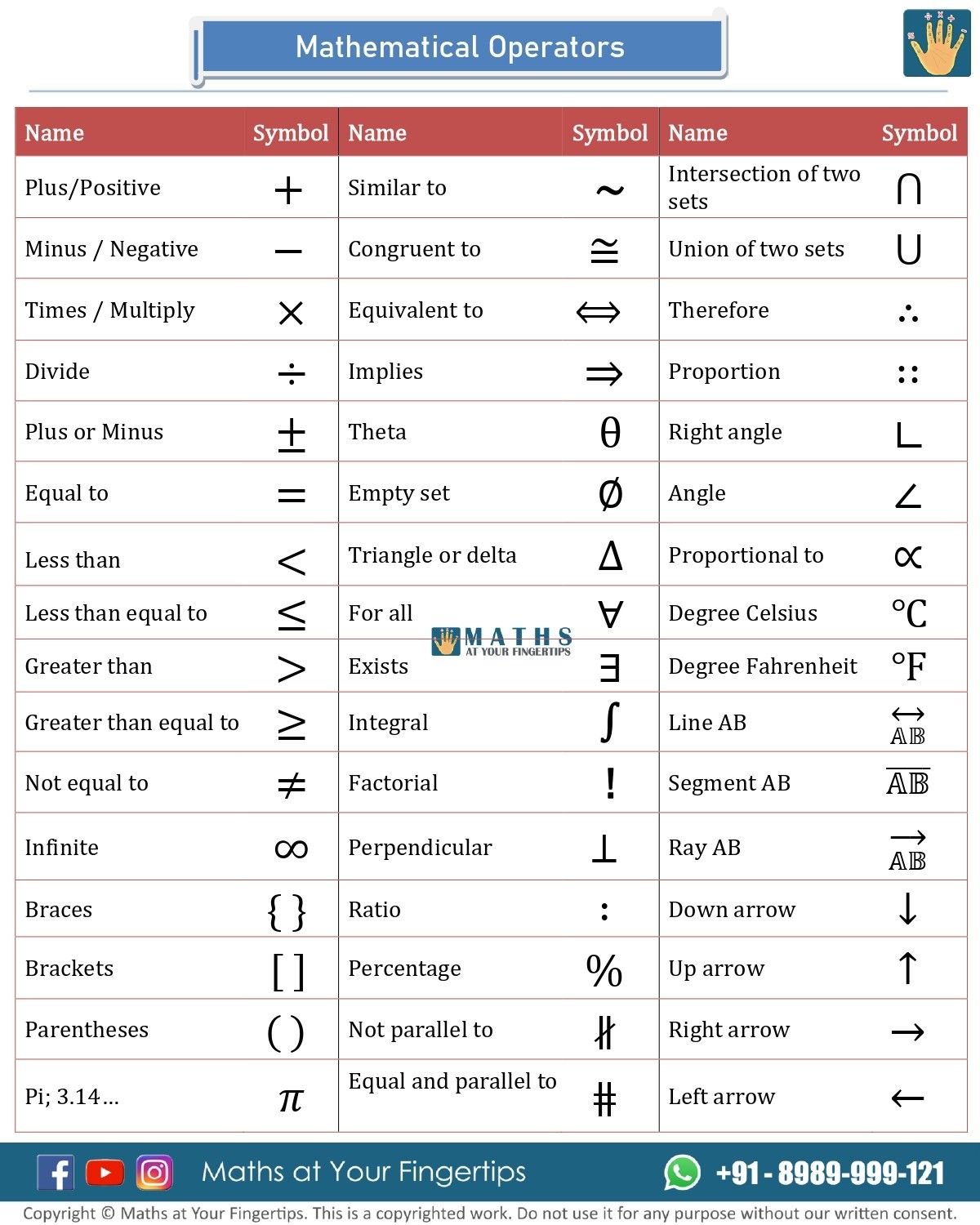Mathematical Properties List

Understanding mathematical properties is crucial for advancing in various mathematical disciplines. These properties serve as the foundation upon which more complex mathematical concepts are built. Here’s a comprehensive overview of key mathematical properties found across different areas of mathematics:
1. Commutative Property
The commutative property states that the order of the numbers does not change the result when adding or multiplying. This means for any numbers a and b: - Addition: a + b = b + a - Multiplication: a * b = b * a
2. Associative Property
The associative property indicates that the order in which you perform operations does not change the result when adding or multiplying more than two numbers. This means for any numbers a, b, and c: - Addition: (a + b) + c = a + (b + c) - Multiplication: (a * b) * c = a * (b * c)
3. Distributive Property
The distributive property shows how to expand a product of a single value and a cluster of values being added or subtracted. This means for any numbers a, b, and c: - Over Addition: a * (b + c) = a * b + a * c - Over Subtraction: a * (b - c) = a * b - a * c
4. Identity Property
The identity property holds that when you add 0 to any number or multiply any number by 1, the result is the number itself. This means for any number a: - Additive Identity: a + 0 = a - Multiplicative Identity: a * 1 = a
5. Inverse Property
The inverse property involves a pair of numbers that, when added together (for additive inverses) or multiplied together (for multiplicative inverses), result in the identity value (0 for addition, 1 for multiplication). This means for any number a: - Additive Inverse: a + (-a) = 0 - Multiplicative Inverse: a * (1/a) = 1 (for a ≠ 0)
6. Reflexive Property
The reflexive property is often seen in relations such as equality, where every element is related to itself. For any number a: - Equality: a = a
7. Symmetric Property
The symmetric property deals with relations and states that if a is related to b, then b is related to a. For equality: - Equality: if a = b, then b = a
8. Transitive Property
The transitive property shows that if a is related to b, and b is related to c, then a is related to c. For equality: - Equality: if a = b and b = c, then a = c
Practical Applications
Understanding these mathematical properties is essential for problem-solving in mathematics, physics, engineering, and computer science. For instance, the distributive property is crucial in algebra for simplifying expressions, while the commutative and associative properties of addition and multiplication are foundational in arithmetic.
Advanced Mathematical Concepts
As you delve deeper into mathematics, these basic properties form the cornerstone for more advanced concepts. For example, the properties of vectors (such as commutativity and associativity of addition) are essential in linear algebra, and the properties of arithmetic operations are critical in understanding group theory.
Implications in Real-World Scenarios
In everyday life, mathematical properties underpin various calculations and analyses. For example, when balancing a budget, understanding the distributive property can help in calculating totals when applying discounts or taxes. Similarly, in physics, applying the commutative and associative properties of vector addition is crucial for calculating resultant forces or displacements.
Educational and Professional Impact
In education, a solid grasp of these properties facilitates a smoother transition to advanced mathematical topics. Professionally, in fields requiring mathematical modeling, such as engineering or economics, these properties are indispensable for accurate prediction and analysis.
Conclusion
Mathematical properties are the pillars that support the entire structure of mathematics. They provide a framework for understanding how numbers interact under different operations and are essential for moving forward in mathematical studies. Whether in basic arithmetic or advanced theoretical mathematics, these properties serve as fundamental principles guiding problem-solving and theorem development.
FAQ Section
What is the significance of mathematical properties in real-world applications?
+Mathematical properties are crucial for precise calculations, predictions, and analyses in various fields such as physics, engineering, economics, and computer science. They help in simplifying complex problems, ensuring the accuracy of mathematical models, and facilitating problem-solving.
How do mathematical properties contribute to advanced mathematical concepts?
+These properties form the basis for more advanced concepts in mathematics. For instance, understanding the commutative, associative, and distributive properties is essential for linear algebra, group theory, and other advanced mathematical disciplines. They help in developing and proving theorems, facilitating a deeper understanding of mathematical structures.
Why are mathematical properties important in professional fields?
+In professional fields, especially those requiring mathematical modeling like engineering, physics, and economics, a grasp of mathematical properties is indispensable. It ensures accuracy in calculations, reliability in predictions, and efficiency in problem-solving, ultimately contributing to professional success and innovation in these fields.
By grasping these mathematical properties, one can build a strong foundation in mathematics and improve their ability to apply mathematical concepts to real-world problems, fostering innovation and precision across various disciplines.

